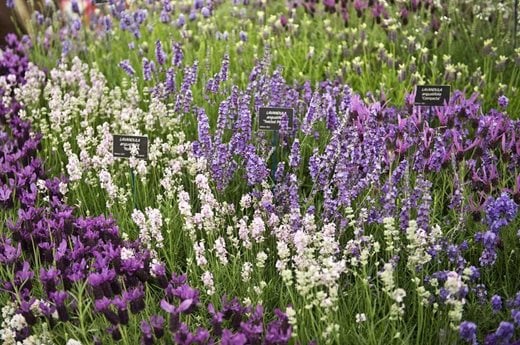 Long associated old ladies’ toiletries, lavender has suffered from a staid reputation and an image that verges on the twee. But these plants have a place beyond fusty drawer liners and the traditional cottage garden. You can select cultivars that spread flowering throughout the summer season and plant in modern drifts, reminiscent of Provence.
Long associated old ladies’ toiletries, lavender has suffered from a staid reputation and an image that verges on the twee. But these plants have a place beyond fusty drawer liners and the traditional cottage garden. You can select cultivars that spread flowering throughout the summer season and plant in modern drifts, reminiscent of Provence.
As well as colour and scent, lavender adds an animated dimension – it teems with bees thronging around its nectaries. Their hum may not be the sound of cicadas, but lavender brings the breath of the south with it. Below is a selection of Award of Garden Merit winning lavenders that you could inhale at home.
They are divided into different groups:
Early flowering
The species L. angustifolia has produced many medium-sized cultivars that are often used for hedging. The most commonly grown is 'Hidcote'. These so-called 'English' lavenders flower from midsummer until the end of July, sometimes flushing again. Their flower heads are generally more rounded than L. × intermedia selections and the foliage is a greeny-grey. Commercially, they produce the highest-quality essential oil from glandular hairs. Hardy thoughout most the UK. RHS hardiness rating H4.
Later summer flowering
Lavandin, L. × intermedia and its selections, are taller shrubs with more elongated flowerheads and silver foliage. They flower from mid July until the end of August. Lavandin is a hybrid between L. angustifolia and L. latifolia. It is more tolerant of acid soil than L. angustifolia. Hardy thoughout most of the UK (H4).
French lavenders
Easily identified by a headdress of perky sterile bracts, L. stoechas and its selections need sheltered, sunny sites. They flower in flushes from late May until end of August. Hardy-ish, but they need a favoured site (H3-4).
Others
Species and hybrids such as L. lanata, L. viridis, L. × christiana and L. dentata are less tough – either frost hardy or half hardy.
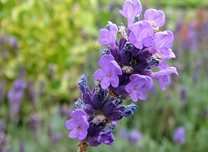
L. angustifolia 'Imperial Gem'
L. 'Imperial Gem' is a compact evergreen shrub creating domes of narrow grey-green leaves and fragrant spikes of dark violet flowers in early summer. H 40cm (1½ft) W. 90cm (3ft).
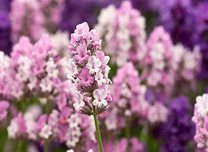
L. angustifolia 'Miss Katherine'
L. 'Miss Katherine' is a bushy evergreen shrub creating erect domes of narrow, grey-green leaves and highly fragrant spikes of light pink flowers with silvery calyces. H 40cm (1½ft) W. 80cm (2.5ft).
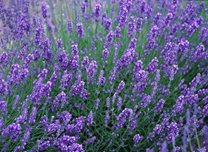
L. angustifolia 'Beechwood Blue'
L. 'Beechwood Blue' is low-growing making compact domes of narrow, grey-green leaves and an abundance of violet-blue flower-spikes in early summer. H. 30cm (1ft) W. 60cm (2ft).
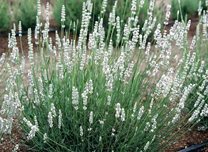
L. × intermedia 'Alba'
L. 'Alba' is a robust evergreen shrub creating an open dome with linear, grey-green leaves and long spikes of pure white flowers held well above the foliage in the latter half of summer. H. 50cm (1½ft) W. 90cm (3ft).
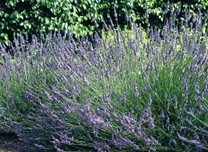
L. × intermedia 'Sussex'
L. 'Sussex' is a bushy evergreen shrub with grey-green foliage and a haze of lilac and violet, pointed flower spikes in mid to late summer. The scent has a lovely soft edge to it. H. 1m (3ft) W. 70cm (2ft).
.jpg?ext=.jpg&width=208&height=152)
L. 'Ballerina'
L. 'Ballerina' is a vigorous hybrid lavender with L. stoechas in its parentage. An evergreen, upright shrub, it has aromatic, grey-green foliage. Purple flowers in dense spikes are topped by conspicuous white bracts which flush pink-purple with age. Flowers over a long period from late spring and through summer. H 60cm (2ft) W. 60cm (2ft).
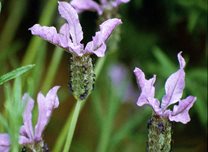
L. 'Willow Vale'
L. 'Willow Vale' is a vigorous upright evergreen shrub, with narrow, yellow-green leaves and erect flower stems mingled with the foliage bearing dense spikes of deep violet flowers. These have conspicuous reddish-purple terminal bracts. H 80cm (2½ft) W. 50cm (1½ft).
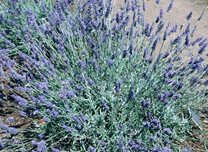
L. × chaytoriae 'Sawyers'
L. 'Sawyers' is a bushy evergreen shrub with linear, silvery-grey leaves and a flattened dome-shaped habit. Light purple flowers are held in almost triangular flower spikes from mid summer through August. It is a hybrid of L. lanata x L. angustifolia. H. 40cm (1½ft) W. 70cm (2ft).
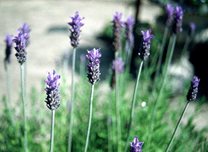
L. dentata var. denata 'Royal Crown'
L. 'Royal Crown' has thick flower spikes topped by tufts of violet-blue bracts over summer. The grey-green leaves have an interesting crinkly-looking texture and are toothed, hence the epithet dentata. It will need a dry spot at the base of a wall or grow it in a pot to move into a light and airy place indoors in winter. H. 90cm (3ft) W. 90cm (3ft).
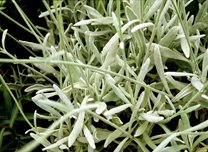
L. lanata
L. lanata is an evergreen shrub with white-woolly stems and leaves hailing from southern Spain. It bears dark purple flowers in long-stemmed aromatic spikes from mid to late summer. Dislikes acidic conditions and needs sharp drainage as well as shelter from cold, wet winters. H. 60cm (2ft) W. 60cm (2ft).

